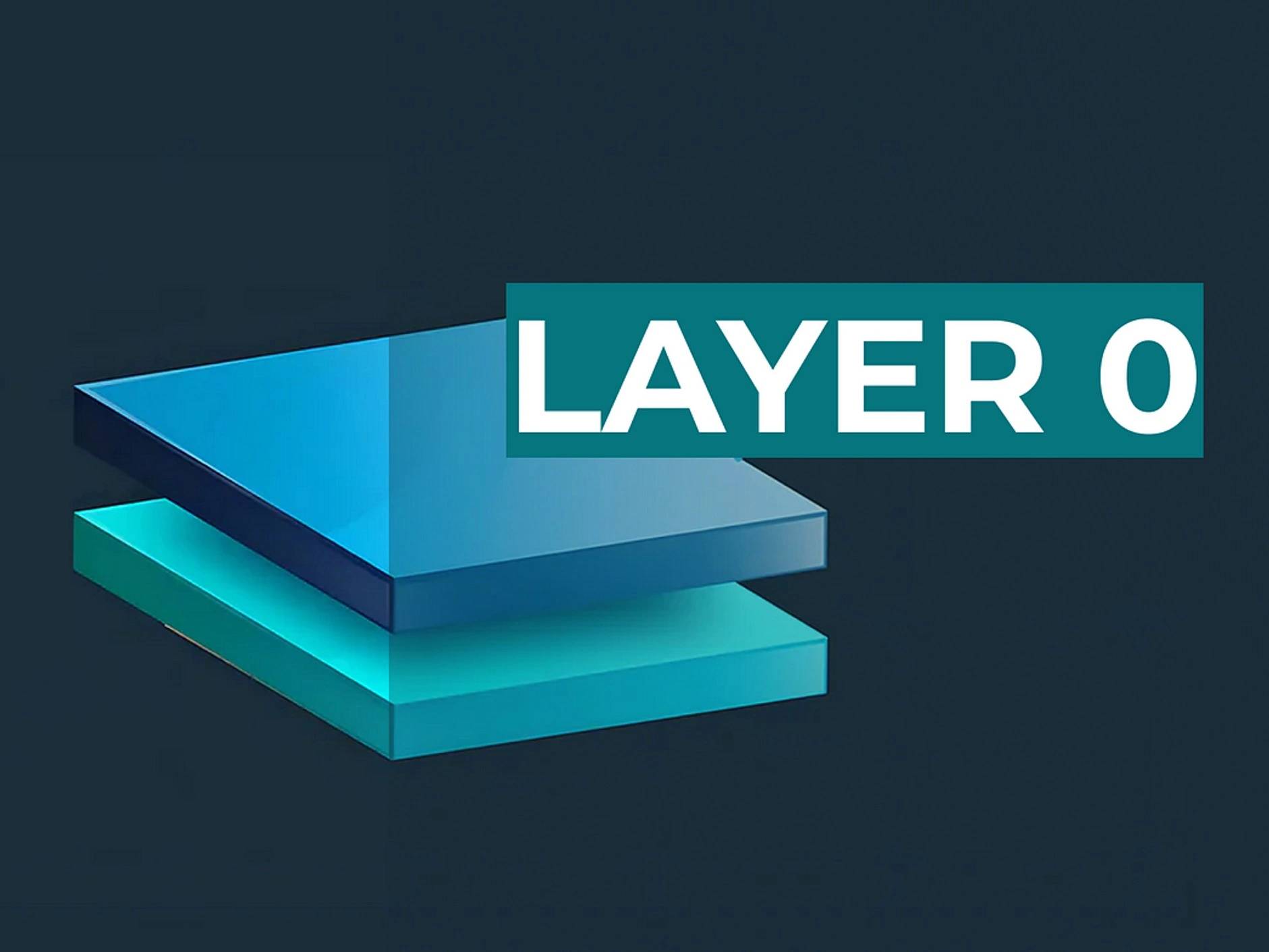订阅 wiki
Share wiki
Bookmark
Layer 0
Layer 0
Layer 0 是支持 Layer 1 区块链开发的基础层。它为区块链网络和应用程序提供必要的 инфраструктура,解决诸如可扩展性等挑战,并促进不同区块链之间的互操作性。[1][2][3]
概述
Layer 0 协议构成了 Layer 1 区块链构建的基础。它们充当区块链网络和应用程序的基础设施,旨在解决诸如可扩展性等行业问题,并实现区块链之间的互操作性。Layer 0 协议使开发人员能够启动为特定应用程序或用例设计的定制化 Layer 1 区块链。在 Layer 0 的支持下,开发人员可以专注于应用程序,而不是共识和安全性。[1][2][4]
对 dApps 的需求一直在增加,这将导致更多的资金流入区块链领域,以支持开发。layer 1 区块链作为 dApps 和 web3 开发的基础设施的需求不断增长,揭示了与 layer 1 网络相关的痛点。例如,它们将难以满足开发人员的需求,以及最终用户在可扩展性、去中心化和安全性之间的平衡方面存在矛盾的观点。[5]
Layer 0 协议有助于补救使用单体架构构建的 Layer 1 网络所面临的这些挑战,例如 Ethereum 网络。通过创建更灵活的基础基础设施,并让开发人员启动他们自己的特定用途区块链,Layer 0 希望更有效地解决诸如可扩展性和互操作性等问题。[3]
Layer 0 区块链作为区块链生态系统中更具可扩展性和效率的替代方案而出现。它们可以帮助管理大量的交易,同时提供更好的隐私和安全性的优势。[5]
互操作性
互操作性是指区块链网络彼此通信的能力。此属性使区块链支持的产品和服务能够更紧密地交织在一起,从而提供更好的用户体验。
构建在同一 Layer 0 协议上的区块链网络可以默认地相互交互,而无需专用桥梁。通过使用不同迭代的跨链传输协议,Layer 0 允许生态系统的区块链构建在彼此的功能和用例之上。一些常见的成果是增强的交易速度和更高的效率[3]
Layer 0 协议旨在允许 Layer 1 区块链进行通信和互操作,努力为用户提供跨多个网络的无缝体验。如果没有 Layer 0 网络提供的互操作性解决方案,各个区块链将在很大程度上独立运行。这限制了它们的效用,并阻碍了系统无法相互通信和交互时产生的网络效应。[1]
可扩展性
像 Ethereum 这样的单体区块链通常会拥堵,因为单个 Layer 1 协议正在提供所有关键功能,例如交易执行、共识和数据可用性。这为 Layer 0 可以通过将这些关键功能委派给不同的区块链来缓解的可扩展性创建了瓶颈。
这种设计确保了构建在同一 Layer 0 基础设施上的区块链网络可以各自优化某些任务,从而提高可扩展性。例如,可以优化执行链以处理每秒大量交易。[3]
开发者灵活性
为了鼓励开发人员在其上构建,Layer 0 协议通常提供易于使用的软件开发工具包 (SDK) 和无缝界面,以确保开发人员可以轻松启动他们自己的特定用途区块链。
Layer 0 协议为开发人员提供了极大的灵活性来定制他们自己的区块链,允许他们定义自己的代币发行模型,并控制他们希望在其区块链上构建的 DApps 类型。[3]
Layer 0 的工作原理
Layer 0 协议的运作方式各不相同。每个协议的设计、功能和重点都不同。
但总的来说,Layer 0 协议充当主要和主要的区块链,支持来自各种 Layer 1 链的交易数据。虽然有构建在 Layer 0 协议上的 Layer 1 链集群,但也有跨链传输协议,可以跨不同的区块链传输代币和数据。[3]
一些 Layer 0 协议采用基于中继/侧链的基础设施,该基础设施主要由三个组件组成 - 主链、侧链和跨链。主链支持 Layer 1 之间的数据传输,而侧链是连接到主链的特定于应用程序的 Layer 1。跨链通信协议充当 Layer 1 之间数据交换的标准。
-
主链 主链充当主要区块链或 layer 0 区块链,它存储来自不同 layer 1 链的所有交易数据。[5]
-
侧链 侧链是独立的 layer 1 网络,它们拥有自己的验证器节点集合,并且可以运行其独立的共识机制。侧链不依赖于主链的安全性。但是,它们将共享主链的安全性,因为它是最去中心化和最大的链。
layer 0 网络中的侧链可以通过不同的方式共享安全性。例如,用户可以质押 layer 0 链的原生代币,以成为 layer 1 网络上的验证器。这意味着用户可能会因提交欺诈性交易而损失其 layer 0 代币质押及其 layer 1 质押。
另一方面,layer 1 区块链也可以定期与 layer 0 共享其网络状态、交易历史记录和更新的帐户余额记录。这有助于在网络中保留备份,该网络具有更高的安全性,以应对 layer 1 网络受到威胁的情况。[5]
-
跨链传输协议 重要的是要注意,跨链传输协议在不同的 layer 0 网络中可能以不同的形式出现。跨链传输协议的主要目标是灵活地实现代币和不同形式的数据在区块链之间以完全安全和无需信任的方式传输。在 Cosmos 的情况下,跨链传输协议是 Cosmos IBC。Avalanche 使用 Avalanche Warp Messaging 协议,而 Polkadot 使用 Polkadot XCMP 协议。[5]
Layer 0 网络的示例
Cosmos、Polkadot 和 Avalanche 是使用中继/侧链结构的 Layer 0 网络的示例。像 LayerZero 和 zkLink 这样的新来者代表了多链互操作性的下一个进展。[2]
Polkadot
Ethereum 联合创始人 Gavin Wood 设计了 Polkadot,以允许开发人员构建自己的区块链。该协议使用一条主链(称为 Polkadot Relay Chain),并且构建在 Polkadot 上的每个独立区块链都称为并行链或 parachain。
Relay Chain 充当 parachain 之间的桥梁,以实现高效的数据通信。它使用分片(一种拆分区块链或其他类型数据库的方法)来提高交易处理效率。
Polkadot 使用 权益证明 (PoS) 验证来确保网络安全和共识。想要在 Polkadot 上构建的项目参与拍卖以竞标插槽。Polkadot 的第一个 parachain 项目于 2021 年 12 月在拍卖中获得批准。[3]
Avalanche
Avalanche 由 Ava Labs 于 2020 年推出,专注于 DeFi 协议,它使用由三个核心链组成的三区块链基础设施:合约链 (C-chain)、交换链 (X-chain) 和平台链 (P-chain)。
这三个链经过专门配置,以处理生态系统中的主要功能,从而在实现低延迟和高吞吐量的同时增强安全性。X-Chain 用于创建和交易资产,C-Chain 用于创建智能合约,P-Chain 用于协调验证器和子网。Avalanche 的灵活结构还使快速且廉价的跨链交换成为可能。[3]
Cosmos
Cosmos 网络由 Ethan Buchman 和 Jae Kwon 于 2014 年创立,由一个名为 Cosmos Hub 的 PoS 区块链 主网 和称为 Zones 的定制区块链组成。Cosmos Hub 在连接的 Zones 之间传输资产和数据,并提供共享的安全层。
每个 Zone 都是高度可定制的,允许开发人员设计自己的加密货币,具有自定义的区块验证设置和其他功能。托管在这些 Zones 中的所有 Cosmos 应用程序和服务都通过区块链间通信 (IBC) 协议进行交互。这使得资产和数据可以在独立的区块链之间自由交换。[3]
| Cosmos | Polkadot | Avalanche | |
|---|---|---|---|
| 共识 | Tendermint Core | Nominated Proof of Stake | Avalanche Consensus (X-Chain), Snowman Consensus (P and C-Chains) |
| 生态系统结构 | Hub - Zones | Relay Chain - Parachains | Subnets (No sharding) |
| 生态系统中的 L1 链 | Zones | Parachains | Subnets |
| 跨链技术 | Inter-Blockchain Communication Protocol (IBC) | Cross-Chain Message Passing(XCMP) | Avalanche Warp Messaging (AWM) |
| 开发工具包 | Cosmos SDK | Substrate | Avalanche -CL1 |
| 最终性 | ~3 秒的最终性 | parachain 之间 12 到 60 秒的最终性。 | |
| 外部区块链需要更长的时间 (~60 分钟) | 低于 3 秒的最终性,大部分发生在低于 1 秒内 | ||
| 安全性(主网和 L1) | 链间安全性支持共享安全性 | 共享安全性 | 共享节点,但不共享安全性 |
发现错误了吗?
